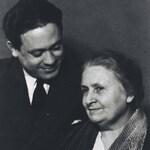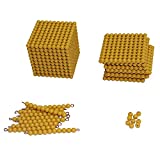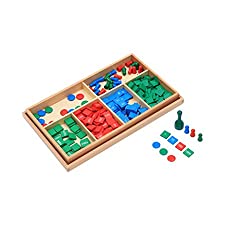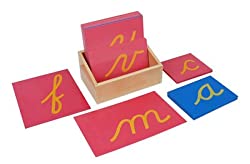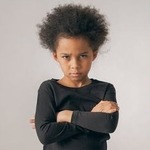How is Montessori Different from Traditional Education?
by Matt Bronsil, author of English as a Foreign Language in the Montessori Classroom
Table of Contents:
Key Differences
Forget everything you know about education.
The 3-Hour Work Cycle
Areas of the classroom:
Practical Life
Sensorial
Math
Language
Cultural and Science
Putting it all together:
What Happens in the Classroom?
Video of a Classroom
Description of the Video/Materials Seen
Key Differences Between Montessori and Traditional School
What makes Montessori different?
👉 Children are moving around the classroom, choosing what is best for them.
👉 The teacher plays a role of an assistant, rather than always being the focal point.
👉 The hands-on materials are the central part of the method, not something brought in as something extra for a specific lesson given by the teacher.
👉 Children have time to work and explore.
👉 Not everyone is doing the same thing, but everyone is independent enough to choose what they are working on.
👉 Rather than working because we "have to" because "the teacher assigned this," children are selecting work and engaging in it because they want to and find the work meaningful in some way.
The Montessori philosophy makes these ideas central to their philosophy and builds the classroom environment around those ideals, as opposed to more traditional forms of education where these ideas are brought in as extra to enhance the learning.
Forget everything you know about education.
If when you think of school, you think of a teacher in front of a class, children sitting down in chairs around a circle or in rows, or a big chalkboard that every child copies from, I want you to forget about that for a minute. Pretend that never existed. The hard part of explaining what Montessori is often comes from our own preconceived ideas of what education is like. People often think, "Oh. Montessori is a type of education and they do some things differently." The reality is quite different: there are few similarities between what actually happens in a Montessori classroom when comparing it to what most think of as a traditional classroom.
Put that all aside...
When trying to understand Montessori, it is best to put all the ideas about education aside and just begin with the idea that you're visiting from another planet and have never heard of this strange idea from earth called "school."
The classroom and the three-hour work cycle
In Montessori, the classroom is set up with materials that are designed to meet specific developmental needs. These materials also help the child discover and learn certain desired outcomes in the curriculum. The students are provided a lot of time to freely explore the classroom, select what they want to do, and work on it. For ages 3-6 (Montessori preschool/kindergarten) and Elementary, students are usually allowed three hours of this uninterrupted work time. They might choose materials from the following areas:
Practical Life:
Practical Life materials are designed to teach the students about practical skills. They broadly fall into three categories: care of yourself, care of others, and care of the environment (in no particular order). For 3-6, a larger emphasis falls on care of self while the elementary has a larger emphasis on the care of the environment and others. Neither group excludes the other skills, but rather the developmental needs of the ages are different and what they tend to work with is different. 3 to 6-year-old children are in a sensitive period for order, so their interests and needs from the material are different from a child in elementary school, who is more interested in branching out and connecting to the world around them.
Did you know:
Practical Life activities also help the children develop their hand muscles used later for writing with a pencil.
Sensorial:
The sensorial material help the child develop their five senses. These are largely utilized in the 3-6 classroom for this purpose, but are often used in elementary to help a child figure out mathematical concepts. My favorite examples to explain this is are the binomial and trinomial cubes. Here they are:
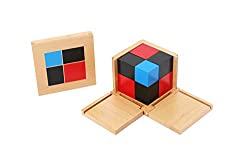
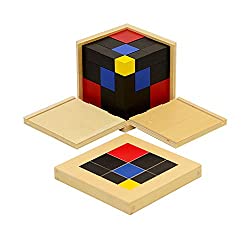
The Binomial (top) and Trinomial (bottom) Cubes.
In the 3-6 Casa Classroom, these materials are used to match up different shapes, sizes, and colors to create the cube. The child takes all the pieces out and arranges them in order, then begins to build the cubes. In elementary age, the child learns the mathematical ideas and formulas behind them:
Binomial Cube: (a+b)3 = a3+3a2b+b3+3b2a.
Trinomial Cube: (a+b+c)3 = a3+3a2b+3a2c+b3+3b2a+3b2c+c3+ 3c2a+3c2b+6abc.
See the Trinomial Cube
Watch the video posted later on this page. You will see the trinomial cube in it. I put a description of all the materials in the video and the times you can see them so you can follow along.
The bridge to enjoying math:
The sensorial materials provide sensory input for the math materials. The child understands and appreciates math more than if simply taught cognitively.
Mathematics:
The sensorial materials lead directly into the math materials. The math materials move from a very concrete idea of what is presented into more abstract thinking about the concepts. Montessori teachers love using beads to teach math. We represent the idea of place value with numbers with concrete materials. We present the idea that 3754 is not just "three, seven, five, four," but rather three thousands, seven hundreds, five tens, and four units.
Once the child has mastered the idea of 1-10 and zero, they are introduced to this concept. We introduce the unit bead, a single golden bead. It represents one unit. Then we introduce the 10 bar, which has ten beads held together in a straight line by a metal wire. Then we introduce the hundred, which are ten of the ten bars stuck together to make a hundred and is shaped like a square. The thousand cube involves 100 of the ten bars put together to make a giant cube of 1000 beads. The golden bead materials play a part later in the curriculum as the child learns to add, subtract, multiply, and divide using these very concrete materials. When the child adds 2000 to a number, the child literally grabs two thousand cubes and adds them in.
A child discovers math terms:
The hundred square is ten (10) ten bars wired together to form a square. The thousand cube is a hundred (100) ten bars put together to make a cube. The idea of "102 (or "ten squared")=100" comes from the child actually holding a square of tens. When we introduce the thousand cube, which are ten hundred squares put together. The idea of ten "cubed" being 1000 (103=1000) is also something the child holds and experiences many times. These abstract concepts are brought to life in a very concrete way with the golden bead materials.
Once the child has a good concrete understanding of the golden bead materials, we move into a more abstract materials, such as the stamp game. The stamp game is more abstract because it uses the same size tiles to represent the different place values. 1000 is no longer a thousand times larger than the unit bead, so the child has to have a good understanding of that before moving into the materials. The materials become more abstract until the child is working with pencil and paper to work out mathematical problems.
Language
The Montessori language materials are multi-sensory materials to engage the whole brain when learning. Because of this, the Montessori method of teaching reading and writing is very much in line with strategies used to teach children with reading difficulties, such as dyslexia. One example of these materials being multi-sensory are the sandpaper letters:
Rather than simply seeing a letter on a piece of paper or a white board, the child is introduced to the letter with something they can trace and feel with their fingers. We introduce not the names of the letters, but the phonetic sounds they make. The child can utilize more senses as they see the letter (vision), trace the letter (touch), hear the sound (hearing), and say the sound (also hearing). Many traditional programs do not incorporate touching the letter sound when learning, but this extra sensorial input is beneficial not only to students with learning difficulties, but for ALL students learning to read.
Cultural and Science
The cultural lessons in Montessori are extremely diverse and include geography, history, language, art, and science. In the 3-6 classroom, a focus is on the child's place in the world. We begin by getting the child to understand their place in their immediate surroundings. Children can begin to understand their own bodies as a beginning point to understanding their space. They can work on things like mapping out their immediate surroundings (the classroom or neighborhood they live) to understand how they fit into being a part of a larger community. We move into larger concepts, such as the world. Geography plays a large part in the cultural education of the 3-6 classroom, teaching ideas of the continents of the world, then about different countries and cultures in the world. The science for Montessori 3-6 involves a solid understanding and joy of nature.
Elementary Lessons
Elementary students are taught something called the Great Lessons. These are stories about the beginning of the universe and different aspects of culture and learning that really raise more questions than answers. The students can then go out and learn how to research the answers to those questions.
I remember vividly being told the first Great Lesson when I was in elementary school. The first great lesson is the story of the origin of the universe. I remember learning about the size of the earth compared to a sun flare and was astonished.
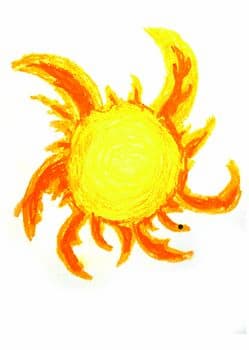
The size of the earth compared to the sun. The earth is represented by the small black dot in the lower right-hand corner flare of the sun.
That was not the end of the learning. In the discussion, I said there must be nothing bigger than the sun. The teacher pointed out that our sun is not the largest sun. This lead me to want to learn about the different sizes of suns and types of suns, something most first grade students do not really get into. The depth of learning that can happen from the great stories is endless, but it starts not with the teacher trying to fit learning goals to the interests of the children, but starts actually with the interests of the children, then learning goals are developed. It is the exact opposite way most systems teach, and it brings about much richer results.
Imagine if...
Rather than your teachers trying to find ways to engage you in the curriculum they had, what if your teachers were trained to use your own questions and interests to get you engaged in learning? How would you think about school differently?
What Happens in the Montessori Classroom?
To understand what happens in a Montessori classroom, imagine a room with different materials on various shelves throughout the classroom. Rather than an adult teaching all the students the same thing, each individual child is choosing what to select and learn with. So if there is a class of 25 students, you can have 25 different activities going on at the same time. It doesn't always work that way, since some students do choose to work together.
In one part of the room, a child may be reading a book. In another part of the room, a child is learning to skip count by 9s to get to 92, or 81. Another child may be learning about the different continents in the world. All of this is happening simultaneously.
The teacher's role is different.
The teacher is observing the students, giving presentations as needed, and managing the overall tone of the classroom. The teacher is not the main focus of the classroom and the child may not even pay attention to the teacher through most of the day.
Now you know:
Maria Montessori described the roll of the teacher more as a scientist studying nature. The main focus is observation without disruption.
The children are given a long extended period of time, typically 2½ to 3 hours, to work independently or in groups of their own choosing. The teacher is there to provide lessons as needed, but also tries to stay out of the way of the students as much as possible. The children generally go through a cycle of working, then relaxing, until they get involved in a work that often involves intense concentration towards the end of that period.
Watch a video of a Montessori Classroom
Watch the video below of Jackson, a second-year Casa (3-6) student and all the things he does during his morning work cycle. They took the three hours and time-lapsed it into 4 minutes. If you see a material you are unfamiliar with and want to pause the video to see what it is, I provide a description of the materials below the video for your reference.
Description of Materials in the Video
🕒 0:28 Pin Punching. He is using a pin punch to punch out a shape. This is also an important material for building up hand strength needed to hold a pencil, and is considered a great preparation for writing activity.
🕒 0:37 Bead Cabinet Arrows. He is sitting next to a child that has laid out and sorted the arrows for the large 7 chain, which represents 73. In the top row, he has all the numbers that are below 100: 7, 14, 21, 28, 35, 42, 49, 56, 63, 70, 77, 84, 91, and 98. Below that is a row of numbers between 100-199. The child is taking the numbers in the top row somewhere else, so the chain is probably somewhere on the rug. Jackson looks over at the child doing this, and we will see this is possibly the inspiration for him selecting the same material later in the video.
🕒 0:47 Jackson is now talking to another student, who is doing a similar work, but instead his arrows are for the large 6 chain, which the child can use to count to 63, or 216.
🕒 0:57 Jackson has now moved on to and activity that combines writing and science. He is working with another student and they are writing down the names of different plant life. Notice a teacher comes by to briefly interact, but leaves rather quickly as he is not needed for Jackson to continue working.
🕒 1:29 In another part of the classroom, children are working with the color tablets. This is the third box of color tablets (there are three total). This box teaches the child the idea of dark and light shades and gradations of colors. Notice this was happening separately, yet simultaneously, from what Jackson is doing. He decides to join in and the others allow him to.
🕒 1:38 Wood Polishing. What I want to point out here is the order and structure of the layout in Jackson's work. Everything has a place and everything is set up in the exact spot. He continues his work after a brief visit and chat with friends by selecting another wooden piece to polish. Everything is then put away in the way it was found.
🕒 2:16 Time for a snack. The Montessori classroom usually has a snack table that children can use throughout the work cycle. I'll add a point I cringed at: I wish he were using tongs. That is the one thing I would really change if this were my classroom.
🕒 2:20 This is (or appears to be) the same boy doing the 63 chain earlier. He is now washing the window to the door. To read more about the importance of practical life and what role it plays for the older students in the classroom, check out my Shining Pennies blog (link opens in a new window)
🕒 2:27 Done with snack, Jackson is now in charge of cleaning up.
🕒 2:32 The Trinomial Cube. A gave a description of this in the sensorial section. One thing he does not do that I make central to my lesson is sort out all the pieces so the ones that are the same are together. This may have been done as it was shown to him, but he may not need that part of the lesson now and is able to do it so well that he skips that part of the lesson. If I saw him work this well with it, I would find a time to show him how to do it blindfolded, which is a whole different level of expertise. Notice a girl comes by to watch and is allowed to do so as long as it is not a disruption. Often times, students learn from each other.
🕒 2:45 Bead Cabinet: Small Chains. After seeing friends with with the 73 and 63 chains earlier in the day, Jackson decides to do the same material. The difference with this is he is not doing the chains that show the cube value of a number, but rather the square value. He lays out all 10 chains and, with some friends helping him, lays out the arrows for each. The smallest (red chain) represents 11, or 1. The largest (golden chain) represents 102, or 100. At the end, you can see each square next to its respective chain. Again, notice the mathematical understanding of how 9x9 is actually 9 squared.
🕒 3:02 We get a glimpse around the room and see the teacher is not the main focus. A teacher is reading to some students, but not everyone is in the room paying attention to the teacher or what they teacher has to say. There is way too many important things to learn to listen to an adult all day. ;-)
🕒 3:17 Reading. He is reading the words. I don't know if I have to explain this material much beyond that. The teacher comes by to check on his progress, but once realizing he is fine and needs no assistance, the teacher thanks Jackson and moves on.
🕒 3:40 Time to prepare for lunch. The students play a central role in helping with lunch, cleaning up, cleaning up, and taking care of the classroom and each other.
💒 4:25 Time to go home!
The Montessori classroom allows the child to become the active participant, thus taking a much larger role in their own learning.
Become a Montessori Teacher
Does this type of education interest you? Maybe you would make a great Montessori teacher. Learn more about becoming a Montessori teacher. If you do choose that route, I also have a blog post that discusses the different training options and considerations you need to think about when choosing where to get trained.
Pick up a Book...
Pauline Polk Lillard also published Montessori in the Classroom, an excellent book that provides a day-by-day record of her Montessori classroom. The book provides great insights into what goes on in a class.
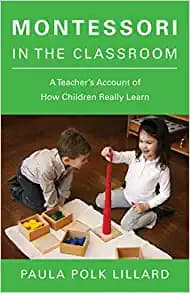
Matt Bronsil is the author of these posts. He can be contacted at MattBronsilMontessori@gmail.com. To contact him or sign up for updates to the site, visit the contact page.
<<< Back to the full article list <<<
Recommended Books
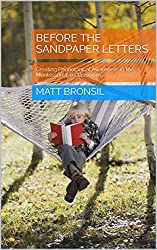
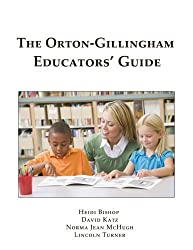
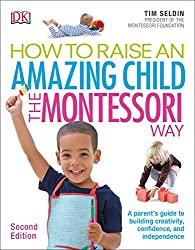
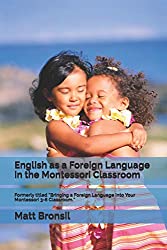
Montessori Second/Foreign Language Blogs

Learn Easily
Teahing Videos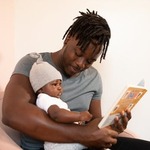
Teaching Reading
Teaching Reading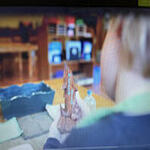
Montessori's Different
Montessori is Different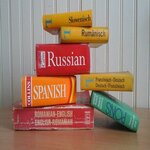
EFL and Montessori
EFL and Montessori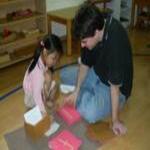
Become a Teacher
Become a Montessori Teacher
Silent E
Silent E
Shining Pennies
Shining Pennies